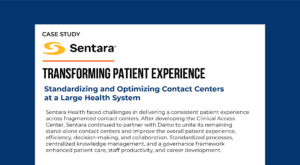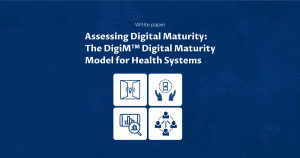Digital transformation and the law of small numbers

A recent survey indicates that health care has made little progress toward value-based care (VBC) since last year, with more than two-thirds (67 percent) of physicians and health plan executives indicating that U.S. health care is still predominantly a fee-for-service system.
The findings come at the same time that the Center for Medicare and Medicaid Services (CMS) has announced a slew of proposals that have, among other things, reduced the amount of total incentives available for redistribution to eligible physicians who meet quality thresholds under the Merit-Based Incentive Systems Program (MIPS) for Medicare beneficiaries.
According to Dr. L Patrick James, Chief Clinical Officer of Quest Diagnostics, who conducted the survey, a majority of physicians believe they do not have the tools or the data to succeed in a value-based contracting environment.
The slowdown in the shift towards value-based care has several ramifications.
A dampening effect on the pace of digital transformation in health care
Many of the components of value-based care, namely data and analytics, remote monitoring, enhanced patient engagement and improved caregiver communications are all part of the ongoing digital transformation of health care. Investing in these programs continues to make economic sense only when there is money to be made doing so, and cease to have any meaning when the system of incentives diminishes the monetary benefits of these programs.
A slowdown in technology investments
With the stalling of the shift to value-based care, health systems are likely feeling the impact of margin compression as reimbursements under the traditional fee-for-service model continue to fall. Discretionary dollars are more likely to go towards maintaining and upgrading essential infrastructure, and in optimizing existing IT investments. The appetite for big-ticket technology investments, especially for digital initiatives, is likely to be low, except for targeted investments with clearly identifiable returns on investment.
Renewed debates on the state of data and analytics
It’s safe to say that the debate on health care’s future in data has been put to rest. However, as indicated by the Quest survey, it appears that physicians are overwhelmed by the flood of data, and making the data actionable is a crucial challenge today. Poor data, along with a lack of adequate tools, impact the ability of physicians to qualify for incentives under the MIPS scheme, forcing them to stay with fee-for-service payment models even in an era of declining reimbursements.
Across industries, there is more downbeat news on digital transformation. A recent study by consulting firm Capgemini and the MIT Center for Digital Business concludes that organizations are struggling to convert their digital investments into business successes. The reasons are illuminating and many: lack of digital leadership skills, and a lack of alignment between IT and business, to name a couple. The study goes on to suggest that companies have underestimated the challenge of digital transformation and that organizations have done a poor job of engaging employees across the enterprise in the digital transformation journey.
These findings may sound surprising to technology vendors, all of whom have gone “digital” in anticipation of big rewards from the digital bonanza (at least one global consulting firm has gone so far as to tie senior executive compensation to “digital” revenues). Anecdotally, “digital” revenues are still under 30 percent of total revenues for most technology firms, which further corroborates the findings of market studies on the state of digital transformation.
Relax, digital is alive and well
Despite the somber survey findings, health systems continue to invest in initiatives that deliver tangible, near-term benefits. An example of a high priority investment area is patient access. At Providence St Joseph Medical system, a focus on online scheduling has delivered savings of $3 to 4 per appointment booked, producing over $300,000 in total savings to the health system. As a bonus, there are fewer no-shows when patients book online, which results in additional bottom-line benefits to the hospital. Since labor is around 60 percent of a hospital’s costs, any digital solution that has a labor substitution component and increases productivity is a target for health system executives. The rising popularity of voice-enablement in caregiver communications is a case in point.
Which leads me to the title of this blog: is digital a game of small numbers? The point solutions referred to above seem to suggest that to be the case, at least as it relates to digital. Health care is no stranger to big numbers, considering the many millions each hospital has invested in implementing electronic health record (EHR) systems over the last decade. However, it seems unlikely that we will see such investment levels in digital, at least in the short term. Part of the reason is that there no single, monolithic digital platform that can perform the tasks at the scale and scope of a foundational transaction system like EHR. The digital health solution provider market is highly fragmented, and there is a shortage of ready-to-deploy “last mile solutions” which I have discussed in an earlier column here.
The momentum for digital transformation, while it has slowed down, is still positive. In the short term, there is ample opportunity to leverage existing investments to stay on the path of digital transformation and transition to value-based care. As Dr. James of Quest Diagnostics says, “Measures that optimize EHRs, make data more accessible and insightful and reduce the complexity of quality measurement are much-needed steps to accelerate this transition.”
Originally published on CIO.com














